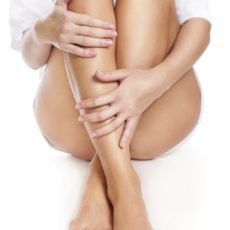The Dangers of Varicose Veins
0
Nearly 80 million Americans have spider or varicose veins. As many as half of all women between the ages of 40 and 50 and three-quarters of those in between the ages of 60 and 70 have them. For guys, one-quarter of those aged 30 to 40 and half of those over 70 have them.
Spider and varicose veins result from weak or broken valves in the veins. When the valves do not open to allow blood to leave the veins, blood backs up and the veins swell. A variety of elements increase your risk of cultivating this condition, including:
- aging
- genetics (family history of the condition)
- a history of embolism
- taking oral birth control pills
- hormone modifications during puberty or menopause, or hormone replacement treatment
- pregnancy
- standing or sitting for extended periods of time
- using a girdle or clothes that is too tight
- obesity
- irregularity
- sun direct exposure (in light-skinned individuals)
Are Varicose Veins A Serious Health Problem?
Spider veins hardly ever are a severe health risk, but they can cause uneasy feelings in the legs. If there are signs from spider veins, usually they will be itching or burning. Less often, spider veins can be an indication of blood backup much deeper inside that you can’t see on the skin. If so, you could have the very same symptoms you would have with varicose veins.
Varicose veins might not cause any problems, or they may trigger hurting pain, pulsating, and discomfort. In many cases, varicose veins can lead to more serious health issues, such as:
Sores or skin ulcers due to chronic (long-lasting) backing up of blood. These sores or ulcers are uncomfortable and hard to recover from. Often, they will not heal until the backwards bloodflow in the vein is resolved.
Bleeding. The skin over the veins ends up being thin and quickly hurt. When an injury takes place, there can be substantial blood loss.
Superficial thrombophlebitis (throm-bo-fli-BYT-uhs), which is a blood clot that forms in a vein just under the skin. Signs include skin soreness; a hard, tender, warm vein; and in some cases pain and swelling.
Deep vein thrombosis, which is an embolism in a much deeper vein. It can cause a “pulling” sensation in the calf, discomfort, warmth, inflammation, or swelling. Nevertheless, sometimes the clot causes no significant symptoms. If it takes a trip to the lungs, however, it can be fatal.
If you have superficial thrombophlebitis (shallow clots), you have a 20 to 40 percent chance of having a deep vein embolism at the exact same time. Deep vein clots can be recognized through ultrasound and then treated typically with anticoagulants (blood slimmers).
Varicose Veins and Venous Disease
Varicose veins can likewise in some cases be the very first stage of a more major, progressive condition. In some individuals, what starts as varicose veins may progress to swelling in the legs. Gradually, the veins can likewise cause hyperpigmentation, or darkening of the skin, generally near the ankle. Without treatment, victims can develop unpleasant – even disabling – venous leg ulcers, which medical professionals think to be the last phase of what’s referred to as venous disease. These ulcers typically occur on the inner leg above the ankle.
Varicose vein treatment is covered by the majority of medical plans, a reflection of the treatment’s value beyond cosmetic concerns. Treatment can be as simple as recommending compression stockings or as intricate as sealing the varicose closed, but even if surgical treatment is required, it is minimally invasive and most patients are back on their feet within a day.

